Click on images to enlarge
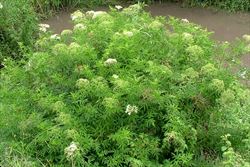
infestation (Photo: Sheldon Navie)
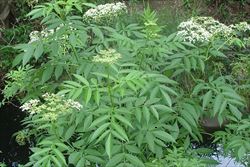
habit (Photo: Sheldon Navie)
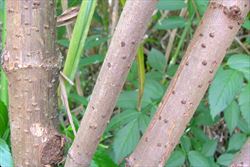
older woody stems (Photo: Sheldon Navie)

younger four-angled stem (Photo: Sheldon Navie)

leaves (Photo: Sheldon Navie)

once-compound leaf with several leaflets (Photo: Sheldon Navie)
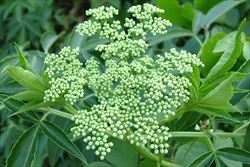
young flower cluster (Photo: Sheldon Navie)

large branched flower cluster (Photo: Sheldon Navie)

most flowers have five petals and five stamens (Photo: Sheldon Navie)

close-up of flowers (Photo: Greg Jordan)
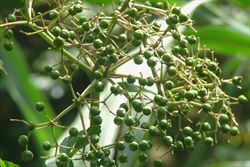
immature fruit (Photo: Sheldon Navie)
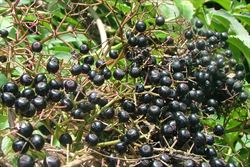
glossy mature fruit (Photo: Sheldon Navie)
Scientific Name
Sambucus nigra L.
Synonyms
Sambucus canadensis L. (misapplied)Sambucus nigra L. subsp. nigra
Family
Adoxaceae (New South Wales)Caprifoliaceae (Victoria, the ACT, South Australia and Tasmania)Sambucaceae (Queensland)
Common Names
black elder, blackberry elder, bore tree, common elder, common elderberry, elder, elder berry, elder flower, elderberry, European black elderberry, European elder, European elderberry, pipe tree, sambucus, sweet elder
Origin
Native to north-western Africa (i.e. Algeria and Tunisia), the Azores, the Madeira Islands, Europe and western Asia (i.e. western Iran, northern Iraq, Turkey, Armenia, Azerbaijan, Georgia and south-western Russia).
Naturalised Distribution
Widely naturalised in eastern Australia (i.e. in south-eastern and northern Queensland, in some parts of eastern New South Wales, in the ACT, in many parts of Victoria, in Tasmania and in south-eastern South Australia).
Also naturalised in Asia, North America (i.e. north-eastern USA and eastern Canada) and New Zealand.
Notes
European elder (Sambucus nigra) is regarded as an environmental weed in Queensland, Victoria and Tasmania.

